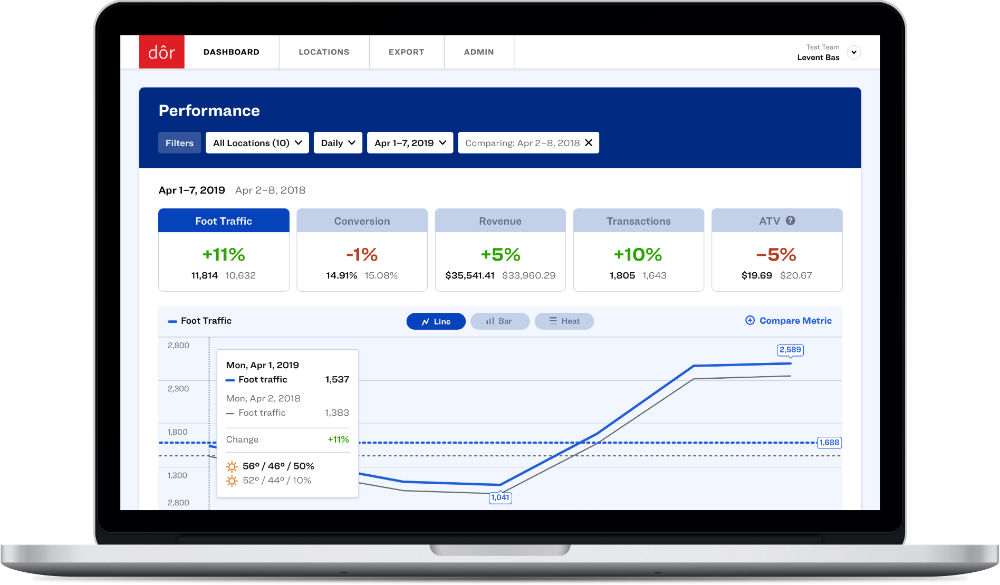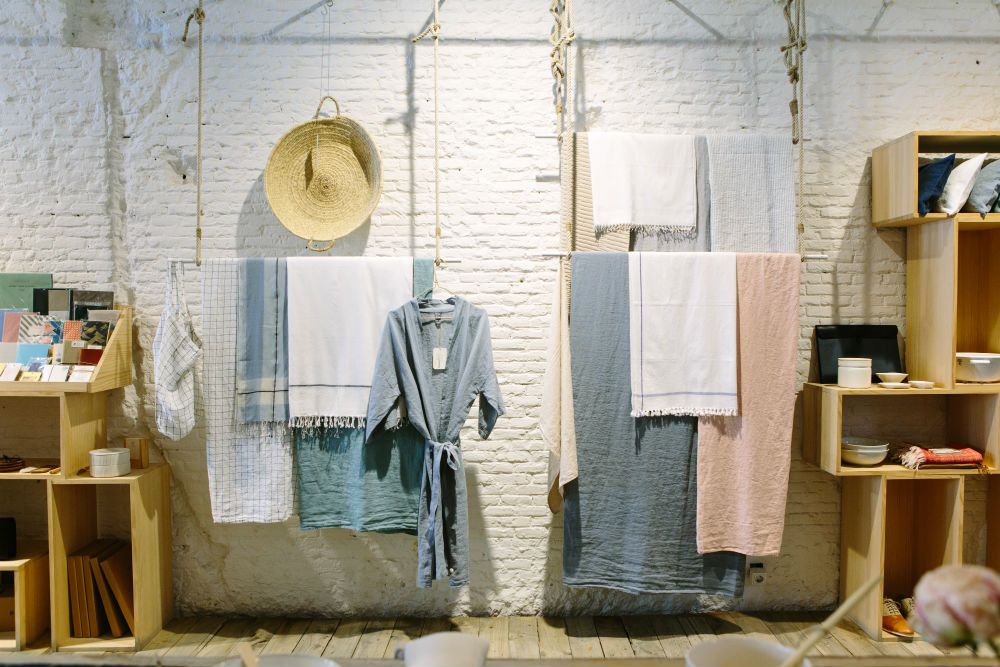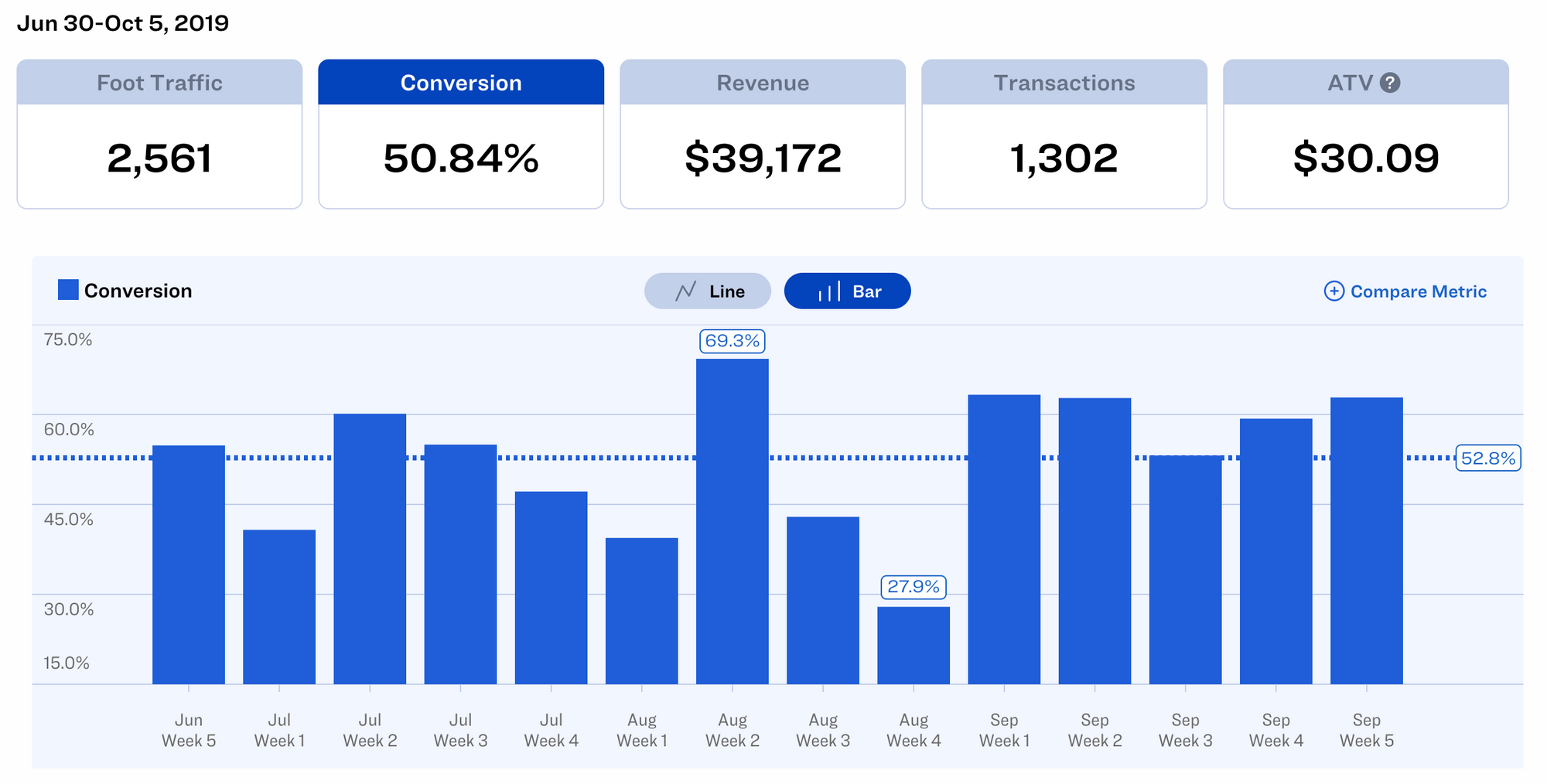Although people counting technologies have been around for some time, not every retailer takes full advantage of them. In fact, many owners do not even consider them a necessity—and in doing so, they inevitably condemn their stores to be less successful than they potentially could.
Indeed, having a people counter is essential for retailers of any size, but it is especially important for small businesses that don’t have the benefit of analyzing data from numerous locations when making crucial decisions. When used intelligently, a people counter can shape your business in many ways other than just providing information on foot traffic.
Below, we take a look at the biggest benefits of people counting solutions and how you can use foot traffic data to take your business to the next level.

Click here to discover how a people counting solution like Dor can help you understand your foot traffic data and how to utilize it to make more profitable business decisions.
1. Provides insight into customer behavior
If you want to understand more about your customers without investing a ton of time and money, a people counter is the perfect solution for your business.
A budget-friendly door counter placed near the entrance of your store will provide you with a wealth of data regarding how many customers walk into your store on specific days of the week and what your peak times are.
Analyzing foot traffic data allows you to look at your business from a different perspective—the customer’s. For instance, you may find that your store traffic remains steady during weekdays but spikes on weekends, or you may discover that you have more visitors during midday than you do in the afternoon.
Armed with this information, you can implement much-needed changes such as hiring additional staff or adjusting your store’s operating hours.
2. Helps you optimize staff scheduling
Speaking of your in-store staff, most retail managers know that scheduling personnel involves a fine balance: You don’t want to have too few or too many people on the floor at any given time. If you’re struggling to manage your weekly or monthly timetables, a customer counter may just be the help you need.

Related: 10 Key Benefits of Employee (Staff) Scheduling Solutions
By using a door counter to measure store traffic, you can see when your busiest hours and days are, making sure to have enough staff in store to assist customers during those times. Conversely, you can use foot traffic data to determine when you have the fewest in-store visitors, then schedule only the employees who need to be there at that time.
3. Enables you to measure customer conversion rates
If you want to measure conversion rates—or the number of shoppers who make a purchase among all the customers who walk into your store on a given day—a customer counter is a key necessity for your business. After all, if you don’t know how many people walk into your store, how can you know what percentage made a purchase?
Related: How to Calculate (and Increase) Retail Conversion Rate
The good news is that you can integrate a door counter like Dor with your point-of-sale (POS) devices to display customer conversion rates in an easy-to-read format. If your conversion numbers are low, you can take steps to improve your retail business, whether it’s by focusing on merchandising selection, pricing, store layout, or customer service.
4. Assists you in measuring and improving marketing efforts
Whether you choose to promote your products or sales campaigns via online ads, TV or radio commercials, or print ads in newspapers and magazines, you’ll likely want to know how well your marketing efforts paid off. Traditionally, retail managers would focus on sales figures to gauge the effectiveness of their campaigns, but thanks to the rise of people counting solutions, sales is no longer the only metric to measure marketing success.
Related: Digital Marketing for Retailers: Every Tactic and Channel You Must Know
By cross-referencing store traffic information with your sales figures, you can get a better understanding of how customers perceive your marketing campaigns. Does a catchy TV jingle bring more people into your store, even if they don’t all make a purchase? Having a customer counter will help you answer questions such as this with greater precision than looking at sales figures alone.
Even if you’re a small retailer without much media exposure, a door counter can help you gauge the effectiveness of your window display, that most fundamental element in brick-and-mortar marketing. If you find that a particular display style draws more customers, you can do more of what resonates with your audience to keep them interested in your store.
5. Allows you to understand how external factors affect your business
A people counter isn’t just useful for calculating day-to-day visitor numbers; it can also be a key tool for understanding larger trends that affect your business. The longer you amass store traffic data, the better you’ll be able to see which factors affect your business beyond your control.
Related: 7 Factors That Affect Foot Traffic for Retailers
Say you get a week of inclement weather and you find that very few people visit your store during those seven days—you can opt to hold an online sale to offset your losses. Or, if you find that a particular event in your town brings more customers into your store year after year, you can ramp up your advertising efforts ahead of the event to maximize your profits during that brief window of time.

6. Gives you the chance to plan ahead
To build on the above point, a customer counter can be an integral tool for planning ahead in your retail business. If you know when your peak hours, days, and even weeks are, you can prepare well in advance to ensure that those times are as stress-free as possible for both you and your customers.
Let’s assume you have a store that gets particularly busy around the holidays each year. By analyzing foot traffic data, you can get a sense of when customers start their holiday shopping—if your store begins to draw more visitors in late November, that means you’ll have to ramp up your inventory, staffing, and marketing efforts well earlier than that to make sure you’re well-stocked and well-staffed ahead of the holiday rush.
7. Lets you assess and compare performance across multiple stores
If you run an enterprise with more than one location, a foot traffic counter is even more vital to your success than you may have thought. While retailers with only one store employ people counting solutions to maximize the success of a single shop, those who manage multiple stores have the opportunity to compare foot traffic data from numerous locations to determine areas of improvement at a much faster rate.

Related: 15 Key Metrics (KPIs) to Measure Retail Store Performance
With people counters integrated into your POS system at multiple locations, you can obtain valuable information such as store traffic, conversion rates, average transaction value, and total sales. By comparing this data, you can easily see which stores are performing well and which are underperforming—you can then try to implement the more successful aspects of your well-performing stores at your other locations.
8. Informs your business expansion decisions
Let’s say you already have one or more successful retailers, and you’re looking to expand to new locations. Here, foot traffic data can once again help you make the right decision for your business.
By analyzing foot traffic and customer conversion data from your existing stores, you can set benchmarks for future business and gauge whether the new opportunities you come across are the right fit for you.
For instance, you can compare street traffic data from potential new locations to see whether they would give you the same foot traffic as your other stores. That could mean the difference between opening your new location at a strip mall versus the city center—a choice that will surely have a long-lasting impact on your company’s bottom line.